Time Extension: I actually wanted to talk to you a little bit about Buffy. That was clearly based on a popular TV show. I'm curious, what was your approach to making the quintessential Buffy game?
Barnes: It's funny. I grew up just like every other Gen Xer, playing games and seeing licensed stuff, and I just couldn't understand why so many of them were crap — sorry to say it, but they were. And I just thought if I could get my hands on license X, I would do a better job. And I think I have — I don't know.
Of course, I did eventually find out, being on the other side, why a lot of those things that happen on licensed games end up happening. But I always feel like a lot of people who go into making licensed games also let the issues of being a license game weigh so heavy on them that it overshadows their ability to do anything better.
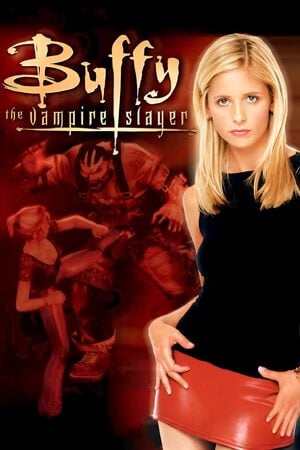
They're so busy fighting with the IP holder over what constraints they have on resources and time and things like that, that they don't just like go, 'Okay, reset, focus. How much time do I have? What people do I have? And what is it that is going to piss off the IP holder?' Because you don't need go to them for everything.
So with every license I work on, I try to focus on, 'If I were a fan, what would I want, right?' So, I think a lot of people get caught up in the morass of the issues of developing a licensed game and dealing with all that stuff. And a lot of them don't end up becoming fans [of the IP].
I don't even know if I was a moderate fan of Buffy when I came onboard. I was probably a passing fan of Buffy. But I felt, 'Okay, I need to become a mega fan of Buffy now that I'm on it.' In fact, the game had already been going for a year before I got on it, but it was just kind of spinning in place — also, an engine was being built, so that doesn't help.
What had happened was I had just gotten done with Star Trek Deep Space 9: The Fallen and I had been put on The X-Files: Resist or Serve. But since Buffy was not going well and there was already a huge investment involved, they said 'Tony, finish the design for X-Files and then you're going to take over Buffy'.
The writing for Buffy was done largely by Richard Hare — a chief creative officer at The Collective and he loved to write. And he was a big fan of things like Star Wars and Star Trek and X-Files and Buffy and all of the other licenses that we got ahold of. And so he would sit with the holders of whatever the IP was and work it out, and he understood that vibe very well. But I was more of the execution kind of person. So I would take this bucket of IP and art and sounds and all that stuff and then cook it up, and try to refine certain things here and there.
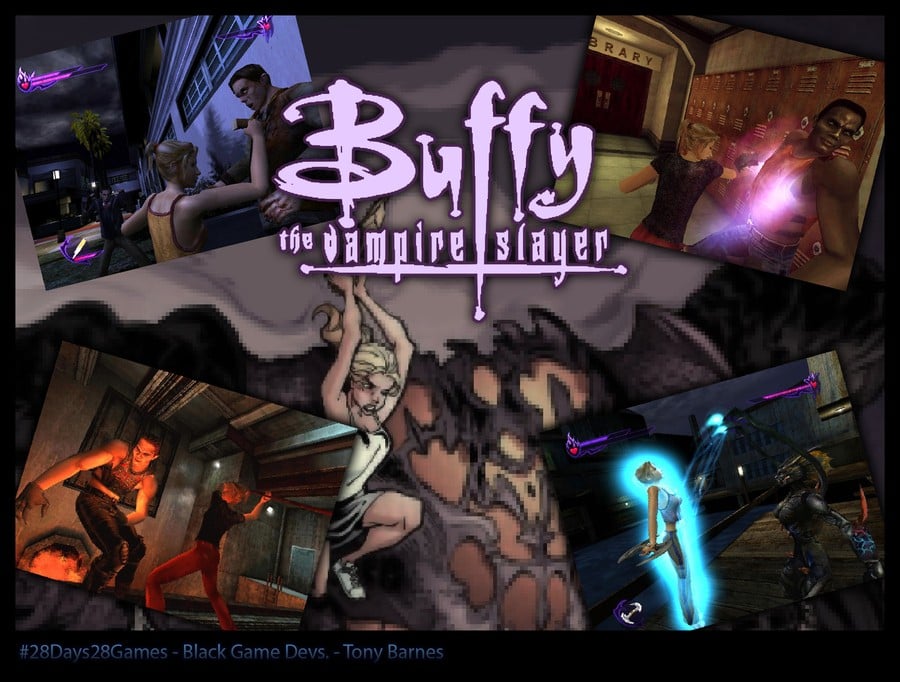
Time Extension: Buffy was obviously a huge deal at the time, being a fairly high profile exclusive for Xbox. It also remains a bit of a cult classic today. I saw on social media, however, that you once stated that you believed it might be more fondly remembered today if the game was attached to a different IP. Is that something you stand by today?
Barnes: This is interesting. The Collective had a lot of really good talented people but at the time, it often kind of faltered in focusing that that energy. We would make games, like Buffy, which is rough but very good. And I was thinking, 'Why is this not being talked about? Why is this not being played? And I would talk to people and ask 'Hey, did you play Buffy?' and what came back was the IP repelled people, to the point where they wouldn't even try it.
They wouldn't go, 'Let's check out this cool third-person action brawler', because they were not gonna be caught dead watching Buffy or whatever. And so what I meant by that was, if this was Blade, it could be the exact same game — just keep everything else the same, but change the voiceover and the main character — and I bet you it would have sold gangbusters and people would still be talking about it. And I still stand by that. I think that people sadly ended up ignoring it because of the IP, not because of the game.
Time Extension: To skip ahead a bit, we want to talk to you about Strider (2014), which you worked on as a design director at Double Helix. Can you talk a little about that project? I'm wondering how did that kind of spin up?
Barnes: The guy that was a VP at EA LA when I worked there on Medal Of Honor (2011) ended up as a studio head at Double Helix and they were working on a first-person shooter game.
So they had revived the Slayer tech, which runs Buffy and Indiana Jones and The Emperor's Tomb and Silent Hill: Homecoming, and they did the work to make it actually be able to do a first-person shooter. And the studio head said, 'I have this team, we have a game, we have to do a first person shooter game really quickly. Nobody on the team has first person shooter experience. Can you help?'
I had helped architect the Slayer engine and the tools, so I knew it in my sleep. And so I said, 'Okay, I'll come do this short thing for Christmas money', and that turned out to be the game Battleship — that was four or five months from tip to tail. After that, I was then going to go back to doing whatever I was doing, when the studio head said to me, 'Hey, we're pitching new products. Have you ever heard of Killer Instinct?' So I helped with the pitch on that.
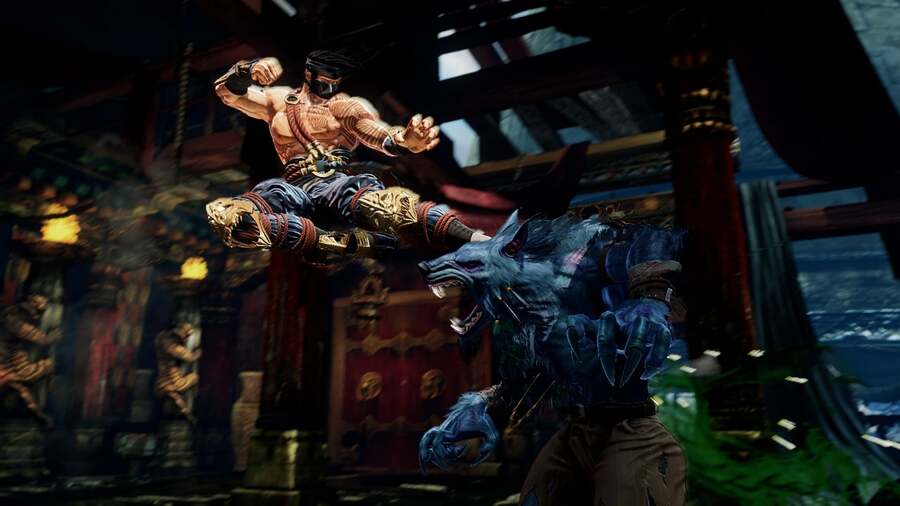
At the time, James Goddard was [a design director] at Microsoft on Killer Instinct and, if you recall, he was the person who had worked with me at The Collective on Buffy and did all the combat. So it wasn't really a hard pitch for me to put together. But again, I did the thing, I was thinking of leaving, and the studio head said to me, 'Have you ever heard of a game called Strider?'
Now, anybody knows me, knows that I love a certain number of things: I love Prince, I love muscle cars, and I love Strider. So he told me, 'We're talking to Capcom and we're looking at this Strider thing.' And I said, 'I'll stick around, but it has to be mine.' I didn't want to be fighting with anyone on some executive bullshit or whatever, because this is a game that I wanted to do for 25 years at that point. So, that's kind of how Strider happened. There was a lot of me in that game. And luckily, Capcom Japan could feel that.
Time Extension: I'm wondering how was the relationship between Double Helix and Capcom Japan in terms of communication? Were there a lot meetings or discussions about what Capcom expected from you, or was Double Helix left to lead the charge on that project?
Barnes: I think the initial relationship and what Capcom assumed was that we were going to be a set of hands and just do as told and maybe bring some ideas. But I wasn't really signing up for that because I had thought for years about what I would wanna do, if I was ever able to make my own Strider game. So when they were kind of proposing stuff or maybe giving direction, I just thought of it as the opening of a conversation. And luckily, we built a lot of trust early on.
Most publishers really just wanna make sure that whoever they're handing their baby off to isn't gonna throw it on the ground
We would have meetings — I think it was every Thursday — around six o'clock and it would be their morning where they were just waking up, and I was dealing with bad crunch food. And I think eventually they realized after a couple of months that I meant the best and stood by my word and had reasons for whatever it was I said that I was going to do. So the meetings got looser and it got to the point where it was just myself and the team producer and we just kind of talked things out..
Most publishers really just wanna make sure that whoever they're handing their baby off to isn't gonna throw it on the ground. So it was important for us to build that trust early on.
Time Extension: I've seen you claim online that Capcom were "deathly afraid of narrative". I'm wondering, were there any plans to have more of a story to the game that were shut down?
Barnes: No, not exactly. Our studio head fancied himself as a writer and really liked World War II stories and everything. So he had this whole narrative that he had built about Striders starting in the World War and there have been assassins in the background all this time and all that. And I thought if I read this as a Strider fan, I'd just go, 'What the hell?'
So I told him, 'You want Gears of Strider. You want it dark and grim and all bro-y, and it's not like that. It's colourful and bombastic.' And he said, 'What, like Fifth Element?' And I said, 'Yeah, like Fifth Element. That makes sense.' Fifth Element versus Saving Private Ryan, which one is more Strider to you?
So I threw out his story and wrote something that was super camp and basically a remix of all of the previous Strider stories that had been told. Then when it came to the worldbuilding, I put all of the exposition and flavour on the other characters, not on Hiryu. That's because, outside of being just stoic badass, his character isn't well-defined and I wouldn't have wanted Strider 2014 to be like Solo: A Star Wars Story, where I'd have to go through a checklist of characteristics and try to build some lore behind the stripe on his vest or something. I remember Capcom was also quite worried about the game turning out like Metroid: Other M.
I remember thinking, 'Well, if we don't give him more of a voice than we've already given him, then that won't be a problem', because his attitude is simply, 'I am a tool, I am a machine, point me in the direction and let me go'. So what we did is we put the focus on the villains.
I think a lot of people kind of dismiss the story and writing in Strider 2014 because it comes off as very silly and campy and kind of '90s. But that's intentional and there actually are layers to the story. Like it's a game about Meio's hubris and his complete dismissal of the planet and the people on it. When you first encounter his minions, they are talking mad crap, but then we had you defeat them repeatedly to try break down that ego and that fake persona that they have.
So every time you encounter one of them, the next time you encounter them, their attitude is totally different. Some of their attitudes are more aggressive, some of them are more timid and respectful, or in the case of the character Solo, he goes nuts. At first, he really couldn't care less about you, but then he gets defeated and comes back, and not only are his visuals changed, but his attacks are far more spiky and bombastic versus the almost elegance of the lasers from the first fight.
In that way, he's his own worst enemy. If he had just remained calm, he probably could have defeated Strider but he became so manic and so incensed that he defeats himself and they're all like that. They all just have this ridiculous attitude and then they get bested by this guy who's basically just thinking, 'This is a Tuesday?'
Time Extension: You've said in the past that, after Strider (2014), you did some pitching for a Strider 2, as well as reboots of other Capcom games like Ghosts 'N Goblins, Black Tiger and Forgotten Worlds. I'm wondering, how far did those pitches get?
Barnes: I don't wanna say too far, but they did get [somewhere] because we were already internal. You know, we weren't owned by Capcom or anything, but we had just made a product for them, so they were already more open to working with us again. So it made sense for them to hand our team another dormant property, or at the very least, as a fallback, for us to do a Strider 2, right?
Strider 2 was merely like a one page document that said, 'Do this, do that, make this better'. It wasn't explored a whole lot because we felt it was best for us to put our effort into other pitches that weren't a given.
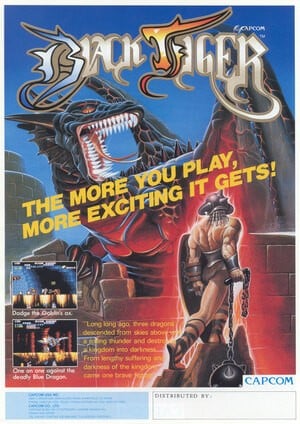
I remember our boss wanted Mega Man because from a business point of view that makes sense — it's one of their biggest properties. But from the perspective of a game maker, a fan, and a person that's played Mega Man since day zero, I didn't want to touch the Blue Bomber because there was too much weight and too much baggage and the fan base is pretty split. I told them that the best we could do is probably an X game, which would make sense because Strider is very similar to X.
I also had a list of other things I wanted to work on, though, and Black Tiger was definitely one of them. I really like Black Tiger and I think that there's a lot of opportunity that's missed there for doing a 2.5D run and gun game. And I knew that if I worked on something like Black Tiger or Forgotten Worlds, which is another one of my all time favorites, I'd be left alone — kind of like I was with Strider. It would be like, 'Oh, you work on that thing over there, I don't know what that is'.
The other ones that we talked about heavily and got further into discussions for were Power Stone and Final Fight and we were really leaning towards Final Fight. But my problem with Final Fight was, it's so tropey at this point, that if you enhance it too much, it's not Final Fight anymore. But if you're so true to Final Fight, then it's just another Final Fight. There's a million games that are just like Final Fight. And so it was like, 'What can I do to Final Fight that would actually make it justify its existence and not piss off all the fans?' And what I came up with was I really wanted to use assets from Street Fighter IV, because I wanted it to look like that.
So you basically would be going through with this Final Fight/Streets of Rage-y type action, but it would all be in the Street Fighter IV aesthetic and proportions, with the line work and all of that. I thought, at least then we'd be furthering the Capcom brand, and it would all be part of the same universe.
But instead Double Helix got bought by Amazon and we couldn't work on anybody else's IP. Hence the reason that KI got sent to Iron Galaxy, and hence why there was no Strider 2, Final Fight, or Forgotten Worlds.
Time Extension: Right now, you have your own independent studio Retro Ninja, with two projects on the go — BPM Boy and Run Die Run Again. Why did you pick those two games as the first titles that you wanted to take on as an independent developer? Could you give us a little background on those titles?
Barnes: With Run Die Run Again, it came about because I love the aesthetic of Mirror's Edge, but I don't exactly like to play it. And I kind of like Super Meat Boy, but I also kind of didn't like it either. So I decided to see what it would be like to cram Super Meat Boy and Mirror's Edge together into a hardcore first-person platformer.
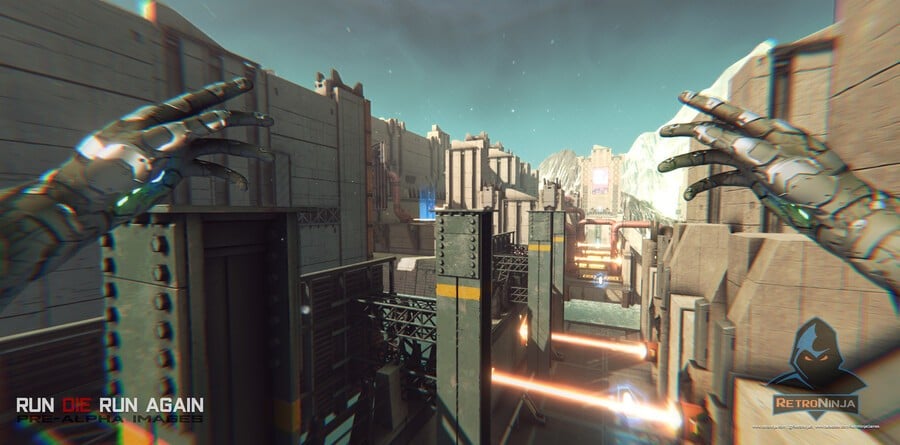
Back in 2020, I had a lot of people become interested in it, but I would say that it was probably bad timing for people to get interested in it, because I didn't have things crystallized in my head on what my company was going to be. So I let the scope just get well beyond what I initially started out as. And I realized my brand, whenever things work best, it's when there's some old school DNA that I can trace my game to.
So I was just kind of was like drowning in Run Die Run Again and thought, I need to just make something simple with a short dev cycle, and around that time, my mother died and her favourite games were Marble Madness and Congo Bongo.
So I thought I should make something simple like Marble Madness as an homage to my mother. And so that's how BPM Boy came about. So I wanted it to be a slicker, faster, looser Marble Madness, and also do something that was different than what I'd been doing for years. So it's cute, but it's also filled with UK garage, acid jazz and a little bit of drum and bass, which is nothing like any music that Amazon would ever allow me to put in a game. It also did a thing that I've always thought that companies should do, which is to make something that helps springboard and kickstart the next thing, or maybe it solves a problem somewhere.

Time Extension: In addition to those, you've also hinted in the past that you are interested in eventually revisiting the Strike series or making a Strike-like game. I'm wondering, is that something that you have planned for the future?
Barnes: I've been asked at least once a month for the past 10 years or so — maybe longer — when am I gonna redo Strike? When is there gonna be a new Strike? And it has always been kind of a back burner thing for me.
As I've said to people before, I could probably roll out of bed and sleepwalk through making a new Strike game. But, because of that, I always end up veering towards the non-Strike things.
Recently I equated it to people asking Prince over and over again to do Purple Rain 2. People did for a long time and eventually he made Diamonds and Pearls which is essentially Purple Rain 2 [Editor's note: It's possible Tony misremembered the album, as the 1990 album Graffiti Bridge is more commonly considered to be the follow-up to Purple Rain]. Eventually I'll make my own Diamonds and Pearls, but right now, there are about four games in the queue ahead of it. Luckily, though, they've all been meandering in the background at the same time, so over the next year or so they'll be out.
I describe my Strike as Neill Blomkamp's Strike. It's going to be a little more grounded and two steps in the future. That's what interests me is doing something that's in the future, and a little less campy with a District 9 kind of vibe. So it'll take place in this dirty, gritty, crunchy analog future.
Time Extension: That's all the questions we had! Thanks for your time Tony. We appreciate you giving us an opportunity to press you on some of this stuff.
